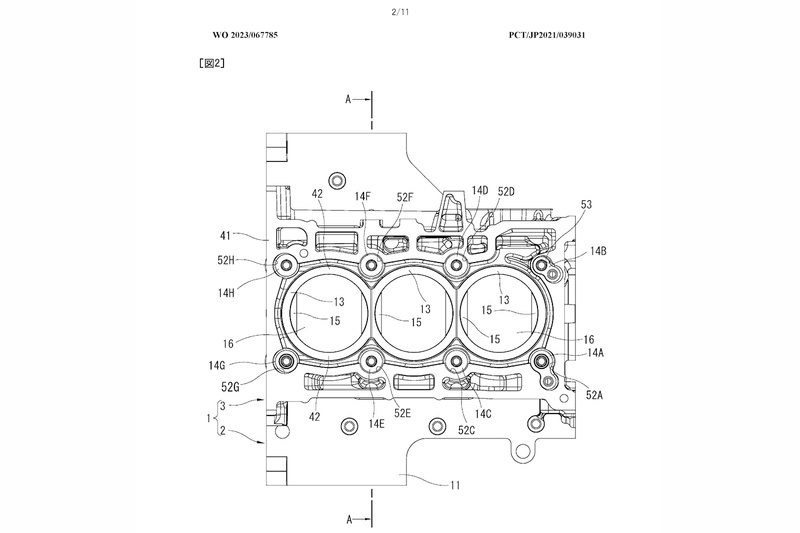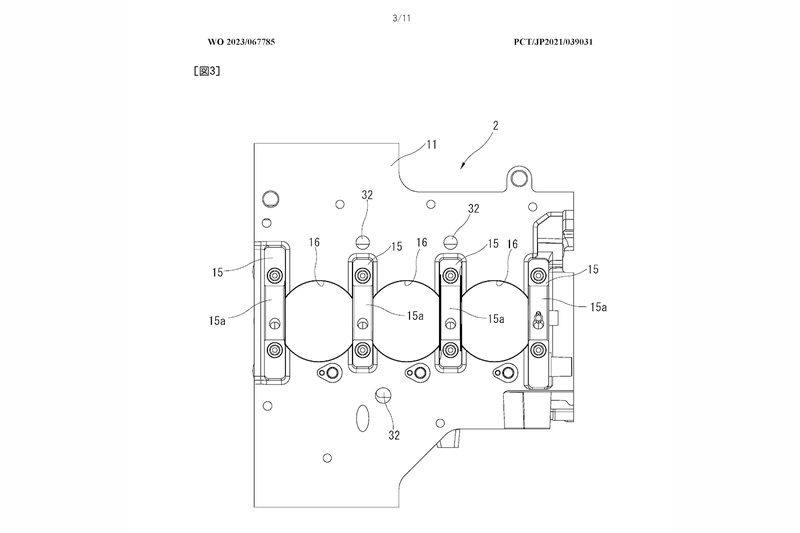Nissan does not expressly indicate the reason for this new design, only explaining how it would construct it. There is a lot of superfluous information relevant to engine builders and mechanics who may be interested in how Nissan intends to route oil lines and other systems, but the main takeaway is that the case of the engine would be made of composite materials, with the innards of the motor still produced from hard-wearing metals.
However, this patent, registered with the World Intellectual Property Office, does not mean an all-composite engine is not possible.
Nissan simplifies the design as "a resin outer member which is welded to the main block." The main block is where the cylinders are housed and where combustion takes place, so this is where most of the heat stresses take place. In this design, the gap between the resin outer member and the inner main block would act as a water jacket, insulating the carbon fiber (or other composite material) that makes up the casing.
One obvious benefit is a reduction of weight, but another is better management of thermal events. Composites can be far more durable than metals, as evidenced in a study published by the International Journal of Pure and Applied Mathematics.








Nissan notes that a composite outer material would not warm up at the same rate as metal. Thus, this design would bring an engine to optimal operating temperature sooner after startup than if all materials were made of metal, reducing the risk of premature wear from inadequate lubrication.
The obvious drawbacks include a potential increase in manufacturing costs and a possible reduction in reliability if the design is improperly implemented, but it has merit, and numerous outfits have sought to unlock the benefits of composite construction in engine manufacture.
AWA Forged Composites claims that its pistons are 40% lighter and "less thermal conductivity means more combustion energy is kept in the cylinder, leading to greater horsepower," among other benefits. Similarly, carbon fiber connecting rods are also rising to prominence in the aftermarket tuning industry. Lamborghini has even been exploring the idea since 2016.
This patent once again confirms that the internal combustion engine is a technology with loads of potential for further development and gives us hope that the next Nissan GT-R will be a game-changer once again.
Source: Carbuzz

